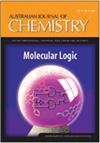一种简单的3D打印微流体装置,用于尿尿酸的即时分析
IF 0.9
4区 化学
Q4 CHEMISTRY, MULTIDISCIPLINARY
引用次数: 3
摘要
即时检测(POCT)技术使科学家能够在患者现场监测和诊断疾病,比传统的基于实验室的方法快得多。本文描述了一种快速、简单、灵敏的3D打印微流控装置,该装置与基于智能手机的芯片检测相结合,用于尿尿酸POCT定量。该装置包括两个圆形输入,每个输入连接到一个微升规模的腔室,由位于样品和试剂腔之间的集成多孔膜分开。微流控装置由透明光聚合物制成,使用3D打印机,一次运行。尿酸的浓度是根据分析物还原铁离子产生的亚铁离子与1,10-菲罗啉络合的显色反应来确定的,并通过智能手机记录颜色。包括中心组合设计在内的响应面方法被用于评估实验参数,随后引入了一个多变量模型来描述实验条件。在最佳条件下,在30 ~ 600 mg L−1的浓度范围内,校准曲线呈线性关系。检测限为10.5 mg L−1。该微流控装置成功地用于尿液中尿酸的回收和定量,回收率为91.7% ~ 99.7%。本文章由计算机程序翻译,如有差异,请以英文原文为准。
A simple 3D printed microfluidic device for point-of-care analysis of urinary uric acid
Point-of-care testing (POCT) technology allows scientists to monitor and diagnose diseases at the patient site, much faster than classical lab-based methods. Herein, a rapid, simple, and sensitive 3D printed microfluidic device integrated with smartphone-based on-chip detection is described for POCT quantification of urinary uric acid. The device includes two circular inputs each connected to a microliter-scale chamber, separated by an integrated porous membrane, located between the sample and reagent chambers. The microfluidic device was fabricated from a transparent photopolymer using a 3D printer, in a single run. The concentration of uric acid was determined based on a chromogenic reaction in which ferrous ion, produced via the reduction of ferric ion by the analyte, complexed with 1,10-phenanthroline, and the color was recorded by a smartphone. Response surface methodology including a central composed design was utilized to evaluate the experimental parameters and subsequent introduction of a multivariate model to describe the experimental conditions. Under the optimum conditions, the calibration curve was linear over the concentration range of 30–600 mg L−1. The limit of detection was determined to be 10.5 mg L−1. The microfluidic device was successfully utilized for the recovery and quantification of uric acid in the urine, with recoveries ranging from 91.7 to 99.7%.
求助全文
通过发布文献求助,成功后即可免费获取论文全文。
去求助
来源期刊

Australian Journal of Chemistry
化学-化学综合
CiteScore
2.50
自引率
0.00%
发文量
65
审稿时长
1.3 months
期刊介绍:
Australian Journal of Chemistry - an International Journal for Chemical Science publishes research papers from all fields of chemical science. Papers that are multidisciplinary or address new or emerging areas of chemistry are particularly encouraged. Thus, the scope is dynamic. It includes (but is not limited to) synthesis, structure, new materials, macromolecules and polymers, supramolecular chemistry, analytical and environmental chemistry, natural products, biological and medicinal chemistry, nanotechnology, and surface chemistry.
Australian Journal of Chemistry is published with the endorsement of the Commonwealth Scientific and Industrial Research Organisation (CSIRO) and the Australian Academy of Science.
 求助内容:
求助内容: 应助结果提醒方式:
应助结果提醒方式:


